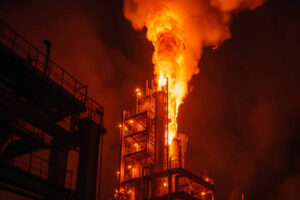Can Warmer Weather Finally Spark Meaningful Cooling Demand?
As we navigate through spring, recent weather forecasts have ignited excitement in the market. Xweather’s latest update predicts above-normal temperatures across the eastern half of the U.S. through May 18. This surge in warmth is pivotal, as it raises expectations for increased electricity demand linked to air conditioning. Until now, mild spring conditions have kept both residential and commercial energy demands subdued. However, this shift toward hotter temperatures might just provide the bullish momentum the market has been seeking.
At Extreme Investor Network, we understand that seasonal shifts can significantly impact trading strategies. Investors should watch how rising temperatures could stimulate energy stocks and related sectors. Warmer weather not only increases cooling demand but also impacts the broader economy by shifting consumer spending patterns.
Is Supply Still Outpacing Demand Growth?
Despite the optimism regarding cooling demand, we need to critically assess whether supply is still outpacing demand. As of Friday, dry gas production hit an impressive 105.4 billion cubic feet per day (Bcf/d), marking a 5.1% year-over-year increase. Yet, total gas demand has dipped to 66.0 Bcf/d, down 6.4% from last year. The rise of liquefied natural gas (LNG) exports, which have climbed to 15.3 Bcf/d—a 4.0% increase week-over-week—provides some relief by absorbing excess supply.
At Extreme Investor Network, we advocate a close examination of these supply-demand dynamics. The current rig count holding steady at 101 indicates that producers are not aggressively expanding output, which is interesting given the abundant supply. Investors should consider how these elements could shape their trading strategies moving forward.
Did Storage Data Deliver a Bearish Blow?
The latest EIA report was a mixed bag. It confirmed a notable injection of 104 Bcf into storage for the week ending May 2, surpassing the five-year average of 79 Bcf and expectations among analysts. While U.S. inventories sit 1.4% above the five-year norm, they remain 16.5% lower than last year’s levels. This injection contributed to bearish market pressure, briefly stalling the rally until warmer weather forecasts shifted sentiment.
Importantly, European storage levels continue to lag at just 41% capacity, a factor that could eventually bleed into U.S. pricing structures. This situation presents traders with a dual-edged sword; while domestic oversupply poses risks, it can also create opportunities for well-informed investors.
Short-Term Outlook: Cautiously Bullish with Weather-Driven Upside Risk
In light of the above factors, our short-term outlook is cautiously bullish. The projections of rising temperatures, combined with the influx of LNG, certainly favor a bullish sentiment. However, traders should exercise prudence. Weather conditions remain the volatile wildcard in this equation. Without prolonged heat or a significant supply shock, overhead resistance levels may continue to challenge price gains.
At Extreme Investor Network, we are committed to empowering our readers with in-depth analyses that transcend mere statistics. Understanding the interplay between weather forecasts, supply-demand dynamics, and global market trends can enhance your trading strategies immensely. As you monitor these developments, remain adaptable and ready to pivot your approach as conditions evolve.
By staying informed and proactive, you can position yourself ahead of the curve in this ever-changing market landscape. Let’s keep the dialogue going as we navigate these exciting opportunities together!

